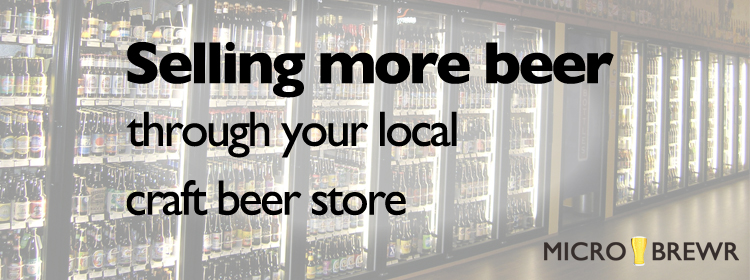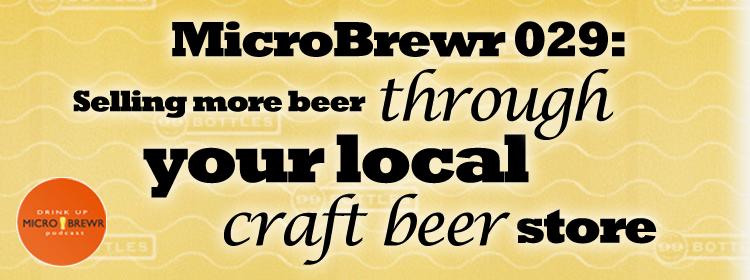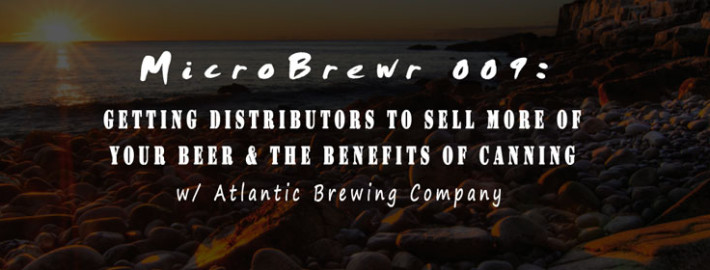Selling more beer through your local craft beer store
Selling more is always a goal. You put hard work into the craft, you want more people to enjoy the fruits of your labor. Before you think of selling your beer at retail, before you even package your beer, there are some things that will help you sell more of your beer at retail.
Tiffany Adamowski and her husband have been operating 99 Bottles beer store, in Federal Way, Washington for the past 7 years. Tiffany was our guest on MicroBrewr podcast episode 029. She taught us how to sell more beer through your local craft beer store. She had so many great tips that I asked her to write a couple of blogs posts to go into more detail.
In her last post, Tiffany told us some tips to build relationships with your local craft beer store. In this post she helps us understand the deep, complex reasons that one beer will be a hit seller.
Selling more beer through your local craft beer store
Consumer buying habits are driven by economics, psychology, and behavior. When making a purchase decision at a specialty beer store, the customer’s decision to buy is usually based on:
- “I like the label.”
- “It’s in my price range.”
- “It came recommended.”
And the repeat decision to buy is based on:
- “It tastes good.”
Product labeling: Personality sells
Beers with catchy, fun, and unique brands are easiest to sell on a customer’s first visit. Beer brands that sell well repeatedly over time, on a customer’s return visits, those that deliver on the promise of who and what they say they are—they’re consistent and familiar.
Think of the biggest craft breweries and what they’re known for:
- Stone Brewing Company: Beer with attitude, not for wussies.
- Sierra Nevada Brewing Company: Whole cone hops; sustainability.
- Dogfish Head Craft Brewed Ales: Off-centered, unique beers.
What’s your beer’s story? …its flavor? …its style? Does its name and packaging reflect this?
Sample beer labels
Note, when giving your beer a name, it’s a good idea to do a trademark search on the U.S. Patent & Trademark Office (USPTO) website to avoid any possible trademark infringements and costly rebrands.
Branding creates an identity. Does each of your beers have a unique personality deserving of a name, or are they simply named: “Blonde, IPA, Pale Ale, and Stout”? Do all the labels look exactly the same, or are there personality differences? Is there one strong theme that pulls all your labels together… or does the label on each beer look so different that your brand is disjointed and confusing?
What’s your angle? How did the beer come to be? Provide fun trivia and stories to those representing your beer to consumers. Equip the people who represent your brand—share information at in-store tastings, through your brewery’s website and social media platforms, sales sheets, and shelf talkers.
With a good story, a retailer can sell a lot of beer.
Product pricing: Keep it affordable
Price your beer to keep your brewery operations in the black, but don’t price so high as to slow it down at the retail location. If you’re starting out and not sure what to charge, check out the retail prices of competing beer brands and ask local independent retailers for information on typical wholesale pricing.
Product recommendations: Trustworthy sources
The opinion of another person, who may or may not have the drinker’s preferences in mind, can have a HUGE influence on the purchase decision.
The influence of the retailer
The small independent craft beer retailer has this advantage: Trust.
Like the TV series “Cheers,” your local beer store gets to know its regulars. The retailer points their regulars to beers they believe will be appreciated.
And for new customers, the local craft beer store aims to get the drinker into a beer they’ll like, so they’ll return—and tell their friends about the experience.
This is quite different from mega liquor chains who focus on upselling certain brands. The independent specialty craft beer store is better equipped to showcase any and all breweries’ offerings to their customers.
The influence of lists
Third-party lists and recommendations also have an impact. Every week people walk into the beer store with lists of “top beers”—not realizing that most on the list are “beer whales.” (Like whales in the ocean, everyone talks about these limited-release beers, few see them.) Most of the general beer-seeking public don’t understand the concept of annual release, brewed once, draft only, and regionally available.
Hence, what excites me most are realistic lists—beers recommended by local beer bloggers, beers that are readily available in our State. But such lists are few. Getting your year-round beers in the hands of local bloggers, news sources and publications who can make “top lists” or “beer picks” lists is most helpful to the average consumer.
The influence of media
Radio, TV, magazines, and podcasts also have an affect on people seeking out your beers. In 2011, the Smithsonian wrote an article on Dogfish Head’s Midas Touch; due to longevity of posts on the Web, people are still coming in seeking out that beer, while referencing the article.
It tastes good: Quality is oh-so important!
I can’t overemphasize quality. If a craft beer tastes bad, a craft beer newbie is likely to say, “That style is nasty,” even though it may have simply been an off batch, product gone bad, or ingredients used in a way that aren’t to their personal preference.
Over the years, I’ve heard a lot of small breweries express their goal of getting their product on the shelves of a major retailer, such as a grocery store or mega liquor chain. This is where I get out my soapbox and say to a new brewery, “Be careful.” Distributors sometimes push products into a big-box store for the sale, allowing product to expire on the shelves. I really feel this does craft beer an injustice—if someone’s first experience with a craft beer is a beer that tastes off… well, that’s just bad business.
If signing on with a distributor, make sure they’re properly storing your beer and are having their sales representatives relay this information. If your beer requires refrigeration, be sure to communicate this—but also realize that may limit the amount of beer the shop may purchase. (Big floor displays are at room temperature.)
When brewing flagship beers that are packaged in bottles/cans, don’t continually tweak recipes. Save those experimental batches for the brewpub or accounts who can adequately represent them. People who fall in love with your beer are expecting a consistent flavor. Handcraft is easy to explain, but extreme changes in flavor aren’t… they can lose you followers.
If you realize a beer didn’t hold up as long as expected, have foamers, or unintentionally soured beers, be humble, confident, and have the balls to do recalls. It’s not just your name on the line, but the name of the retailer who is representing your brand.
Helpful links
Trademark Electronic Search System (TESS), U.S. Patent & Trademark Office (to make sure your desired brand name isn’t already owned by someone else).
The Beer Archaeologist by Abigail Tucker, Smithsonian Magazine, August 2011.
Every Good Brewery Has a Creation Story, The Beer Spectacles, January 6, 2014.
What’s wrong with beer marketing? -> A beer duet – @SommBeer & @HopsCanary, SommBeer – Beer Blog, July 24, 2014.
Join the mail list
Don’t miss other great posts like this one.
Sign up for the email list: Sign me up!

















